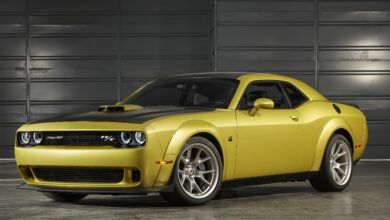Madrid to Host Spanish GP from 2026 Amid Fan Backlash Over More Street Circuits
Formula 1’s announcement of Madrid hosting the Spanish Grand Prix from 2026 has sparked a wave of disappointment among fans, mainly due to the addition of yet another street circuit to the calendar. This change highlights a shift in preferences by Formula 1’s owners towards street circuits, despite fan objections.
Key Takeaways:
- Transition from Traditional to Street Circuits: The shift from Barcelona’s traditional Circuit de Catalunya, a fixture since 1991, to the street circuit in Madrid reflects Liberty Media’s preference for street races, signaling a significant change in F1’s direction.
- Madrid’s Hybrid Street Circuit: The new circuit in Madrid, a hybrid track similar to Australia’s, features 20 turns and an average speed of 218km/h. It’s a blend of street and non-street sections, illustrating F1’s innovative approach to race tracks.
- Fan Reaction and Wider Implications: Fan responses on social media have been overwhelmingly negative, with many calling for a stop to the addition of more street circuits. This sentiment raises concerns about the sport’s direction and its ability to retain its fan base.

Article: The world of Formula 1 is abuzz with the recent confirmation that Madrid will be the new host for the Spanish Grand Prix, starting from the 2026 season. This decision marks a significant shift in the landscape of F1 racing, as the sport moves away from traditional circuits like Barcelona’s beloved Circuit de Catalunya, towards newer, urban track layouts.
Barcelona has been an integral part of F1 since 1991, hosting 33 Grands Prix over the years. Its storied history and fan-favorite status make the move to Madrid all the more poignant. The decision by Liberty Media, F1’s owners, to opt for more street circuits is evident in this shift. However, the fate of the Circuit de Catalunya remains undecided, leaving room for speculation about its future role in the sport.
The Madrid circuit itself is an intriguing addition to the F1 calendar. Spanning 5.47 kilometers and featuring 20 turns, it promises an average speed of 218km/h. The track encircles the IFEMA Exhibition center, offering a unique blend of street and non-street sections, akin to the circuit in Australia. This hybrid design is indicative of Formula 1’s evolving approach to race track design, balancing traditional racing elements with new, urban challenges.
Despite the technical allure of the Madrid circuit, fan reaction has been largely negative. Formula 1’s social media channels have been inundated with comments from fans expressing their dissatisfaction with the increasing number of street circuits. One particularly striking comment implored the “F1 Boss” to listen to the audience, warning that more street races could “ruin the whole category.” This sentiment was echoed across various platforms, with another popular comment expressing a newfound need for a “dislike button.”
The fan backlash extends beyond mere expressions of preference. Some fans are openly contemplating switching allegiances to other motorsports, like the World Endurance Championship (WEC), citing disillusionment with the direction F1 is taking. Amidst the criticism, there are also pockets of sarcasm and activism. While one comment sarcastically praised a turn cutting through a roundabout, another called for a petition to save the Circuit de Barcelona-Catalunya.
As Formula 1 stands at this crossroads, the tension between innovation and tradition has never been more palpable. The introduction of Madrid’s street circuit symbolizes a new era, but it also brings to light the crucial balance between evolving the sport and maintaining the essence that has captivated fans for decades. Only time will tell how this balance will be struck and whether the fan base will adapt to or resist these changes.



